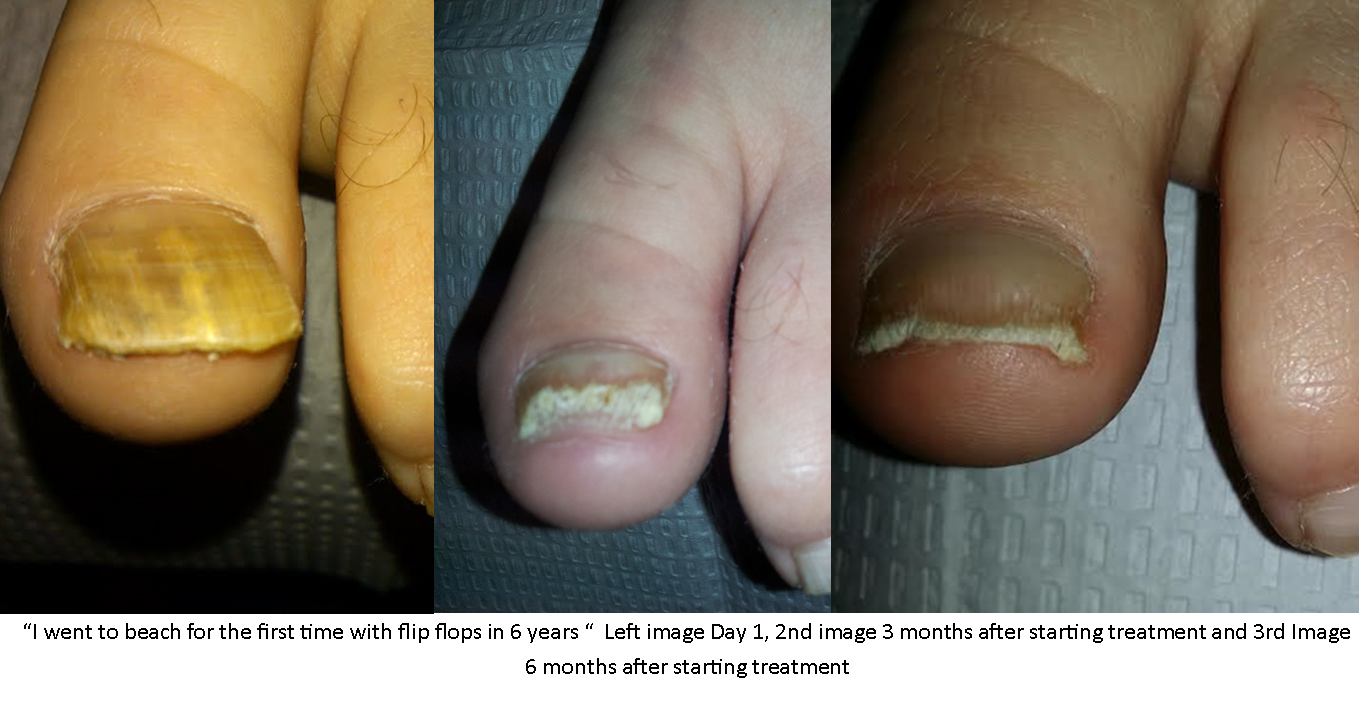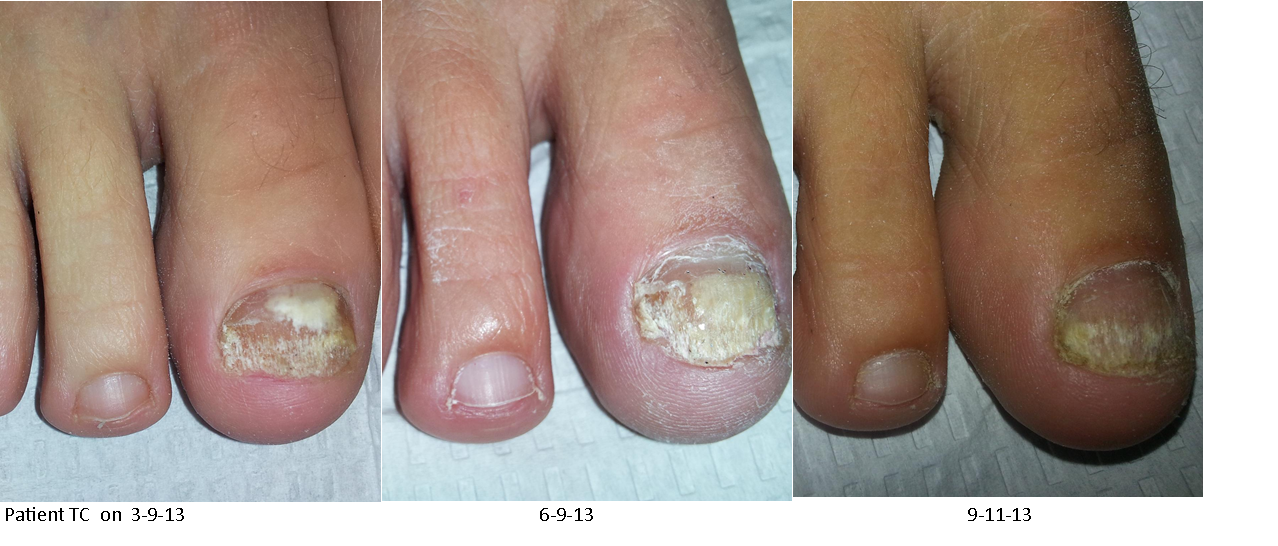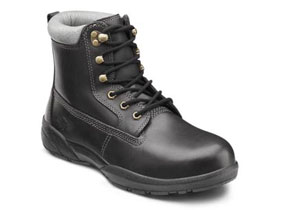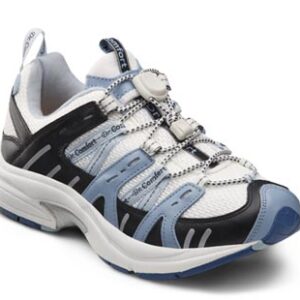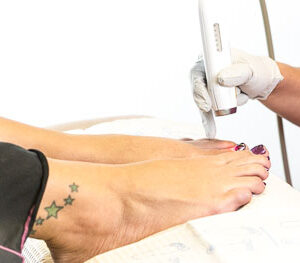Nail Fungus Treatment
Nail fungus treatment can be one of the most frustrating and difficult infections to treat. These infections are resilient and resolve slowly. There are 5 treatment options available, oral medication, topical medication, laser treatments, debridement (maintenance trimming), and permanent removal of the nail.
ORAL MEDICATIONS
- Lamisil is the most commonly used medication due to its safety profile.
- Oral medications usually cost $300- $600
- Oral medications are effective less than 50% of the time with the rate of recurrence ranging from 10%-53%.
- After one year the medication is no longer present in the nail.
- Possible side effects include liver failure, loss of taste, and gastrointestinal problems.
- Serious considerations concerning drug interactions needs to be addressed.
- Terbinafine Packaging Information
TOPICAL MEDICATION
- Ciclopirox nail solution (Penlac) is the only FDA approved topical at this time.
- Rarely effective (between 5.5% and 8.5%) and only in mild cases due their inability to penetrate the nail plate6-11.
- Cost of use is a serious consideration, between $20 and $150 for a 6.6ml bottle. A 48 week supply is needed ~3-4 bottles.
- There are no known side effects.
- The medication requires time, it must be put on daily and removed weekly by filing the nails.
- Other topical treatments like Fungoid Tincture, Tineacide, Vicks Vapor Rub, Tea tree oil do NOT work. I have had patients develop allergic reactions to tea tree oil causing blisters, blisters and infections.
LASER TREATMENT OF NAIL FUNGUS ( ONYCHOMYCOSIS )
- Check out Totally Feet’s Laser Treatment Packages
- Most Effective Laser Nail Fungus Treatment
- A resent study shows 51% of patients had complete resolution of the nail fungus with all tests being negative for fungal infection, 81% of the patients had complete to moderate clearing of the nails.12
- The treatment can cost anywhere from $300- $1500 and insurance does not cover the treatment. At Totally Feet we have several packages available using the newest laser technology.
- There are a number of lasers available for the treatment on onychomycosis, not all of them work the same.
- There are have NOT been any documented side effects.
- Not all nd:yag 1064nm lasers are created equally. Many spas are trying to treat onychomycosis with hair removal lasers. Often times, these lasers do have the proper setting needed for the treatment of onychomycosis. Check out our laser treatment page for a detailed description of appropriate settings needed for the treatment of onychomycosis.
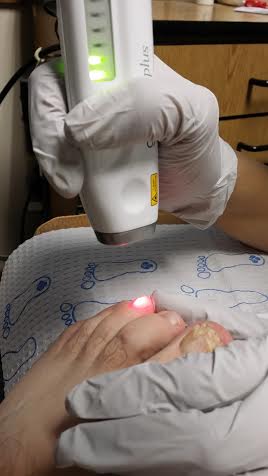
Laser nail fungus Treatment with the Genesis Plus system
How Many Laser Treatments Will I Need for My Nail Fungus???
The number of treatments an individual needs will depend on the severity of the infection. Because the infection is usually progressive it often depends on the amount of time a person has had the infection. Mild cases or nail fungus where discoloring is isolated to the tip of the toenail and thickening is minimal, 1 treatment may be enough.
People with more than half of the nail infected and thickening of the nails, I recommend our 3 treatment package. This will offer the best results for these more moderate to severe cases. These cases have been present for years with little to no effective treatment. Patients with complete nail involvement and severe thickening of the nail may have limited improvement in their nails. If the nail is infected around the root of the nail, permanent nail damage may have occurred. There is no real easy way to know if damage to the root of the nail has taken place. I recommend a treat and see approach.
The bottom line: No treatment is 100% effective for the treatment of nail fungus, our laser is more effective than any other treatment on the market and has no side effects.
MANUAL DEBRIDEMENT
- Manual debridement has been the old standby. This is performed by a trained professional and requires removing as much infected nail as possible.
- Manual debridements of fungal nails is often utilized in conjunction with other treatments to increase the effectiveness of the other treatment.
- This is NOT a cure but more of a maintenance option.
- This has been the treatment of choice for individuals with sever onychomycosis, traumatically injured nails, and patients who are not candidates for oral medication, or find oral and laser treatments too costly.
PERMANENT NAIL REMOVAL
- Permanent Removal of the nail is effective, but the nail is gone permanently.
- This is often the treatment recommended for severe cases of onychomycosis that do not respond to other treatments.
- If there is no nail there is no nail fungus.
- Risks of infection and regrowth of the nail are always possible.
Is Nail Fungus Contagious?
This is one of the most common questions I get from my patients. The answer is- it depends and in most cases yes, or at least there is an increased risk of infection. It is important to understand we are always dealing with probabilities when talking about these issues. Most people have a very low probability of catching a fungus from another person. In most cases we are constantly being exposed to these fungi.
As stated earlier there are many factors to take into consideration when determining how likely an individual maybe to catching nail fungus from someone else. These factors include but are not limited to genetics, circulation, immune conditions, medications, injuries, environment, and shoe gear.
The Genetic makeup of an individual is probably the most important factor when determining the likeliness of an individual catching the nail fungus. Genetically, some people do not have the same ability as others to fight fungal infections. This group of individuals is very likely to have fungal infections in their nails.
Circulation and immune conditions go hand and hand so they will both be covered here. The arteries take red and white blood cells (WBCs) to the extremities. The white blood cells are the front line defense to fighting off infections. When we have diminished WBCs getting to our toes the risk of infection goes up. Likewise, if our WBCs are getting there but are not able to identify or combat the infection effectively, the infection will take hold.
Some medications can decrease our bodies ability to fight infections. The medications most commonly include Methotrexate and Corticosteroids. These medications are commonly given to reduce inflammation, or immunity.
An injury to a toenail can open the nail or cuticle to an infection. Any time an opening presents itself for an infection, the infection is waiting. If the opening is too great for our immune response, again the infection will take hold.
Environmental factors and shoe gear are very closely related so I will cover these two together. As talked about earlier these fungi thrive in warm, dark, moist places. If you are wearing leather steel toed boots in Miami, in the summer, the conditions are going to be perfect for developing the infection.
Obviously, the more risk factors existing, the more likely someone would be to developing these infections. Factors contributing to a decreased ability to combat fungal infections will significantly increase the risk of catching the nail fungus.

